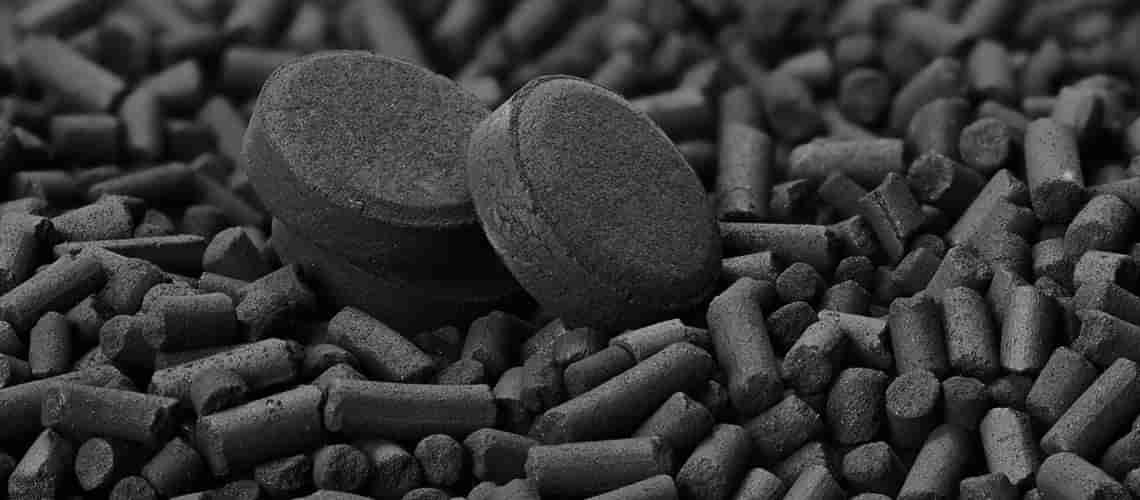- About
- Industries
- Products
- Wastewater Treatment
- Conventional Effluent Treatment: AQUASEP
- Toxic Refractory < 60,000 COD Removal: Catalytic Hydro-oxidation CHD-Ox
- Wet Air Oxidation for TOXIC > 60,000 COD : THERMOX
- Nanobubbles in Water Treatment: NANOPOREX-E
- Chemical-Free Cooling Tower Technology – A Sustainable Solution: ZEPHYR
- MVR for ZLD: Vapozem
- Membranes in wastewater Treatment: PROMEM
- TSS removal and Product recovery using Ceramics: PORESEP
- Heavy Metals and Trace Contaminant removal using Resins: SORBION
- Improving Efficiency of your sand bed filters: NANOMATRIX
- Choosing the Right technology for Wastewater treatment: Wastewater Treatability Studies’
- Reduce/Recover Oil from Wastewater: DISORB
- Produced Water Treatment: PWT
- Non Biofouling Membranes in wastewater Treatment: PROMEM-B
- Advanced Bioaugmentation Culture: BIOPORE
- Cavitation using Ultrasonics: RUSONICS-E
- Oxygen Generator System for Industries: OXYLIFE
- Process Solutions
- Precious Metal catalyst Filtration: CONTUFILT-M
- Activated Carbon Filtration: CONTUFILT-AC
- Raney Nickel Catalyst Filtration: CONTUFILT-RN
- Hot Gas Filtration: CONTUFILT – MH
- Biosolids removal using ceramics: PORESEP
- MVR for ZLD: VAPOZEM
- Ion Exchange-based RESINS: SORBION
- Dehydrating solvents by Zeolite Membranes: SOLVOSEP
- HiGee Continuous Distillation: ROTASEP
- Molecular Separation by Membranes: PROMEM
- Filtration & Separation
- Precious Metal catalyst Filtration: CONTUFILT – M
- Activated Carbon Filtration: CONTUFILT-AC
- Raney Nickel Catalyst Filtration: CONTUFILT-RN
- Hot Gas Filtration: CONTUFILT – MH
- Ceramic Dynamic Membrane Filtration: PORESEP
- MVR for ZLD: Vapozem
- Nano-Bubbles Improve Process Efficiency: NANOPOREX
- Alternate to Continuous Distillation / Rectification: ROTASEP
- Liquid-Liquid Extraction Mixer Settler: SEPARIX
- Ion Exchange-based RESINS: SORBION
- Pervaporation: Dehydrating Solvents and Separating Mixtures: SOLVOSEP
- Cartridges & Filter Bags: FLOWSEP™
- Molecular Separation by Membranes: Recovery and Isolation: PROMEM
- Colour / Organics / VOC Removal: CARBOSORB
- Oxygen Generator System for Industries: OXYLIFE
- RUSONIC – Sonochemistry
- Magnetic Separator Technology: MAG-Filt
- Wastewater Treatment
- Resource
- Contact Us
Case Study: Nano-Bubble Spargers Improve Chlorination Efficiency and Reduce Capital Expenses
Top Posts
5 Applications of Nanobubbles in Agriculture
How to Increase Yield Without Using Fertilisers?
Client Profile
A leading Chemical and Fine Chemicals manufacturer was expanding its production capacity to meet the increasing demand for its products. One critical process involved the chlorination of raw materials, carried out in existing glass-lined batch reactors.
The Challenge
The company relied on conventional PTFE drilled spargers with 3 mm holes to introduce chlorine gas into the 5 KL reactors. This setup had several drawbacks:
- Long reaction time (~36 hours) due to poor gas-liquid mass transfer.
- Excessive chlorine consumption (approx. 5× stoichiometric), most of which escaped as off-gas.
- Increased scrubbing requirements due to unreacted chlorine vented to the scrubber.
- High caustic consumption for neutralizing chlorine in the scrubber.
- Blocked reactor utilization, limiting capacity.
- Environmental burden due to high chlorine emissions and neutralization load.
With increasing demand, the company considered adding three new 5 KL glass-lined reactors at an estimated cost of USD 450,000.
Diva Envitec's Innovative Solution
Diva Envitec introduced its advanced NANOPOREX nano-bubble sparging system, which creates fine nano-bubbles with a much higher interfacial surface area between chlorine and the liquid phase.
Key improvements included:
- Enhanced mass transfer rate, ensuring more chlorine dissolved into the liquid.
- Reduction in reaction time due to more efficient contact between chlorine and reactants.
- Significant decrease in chlorine consumption (~1× stoich instead of 5×).
- Reduced scrubber load, saving caustic and reducing neutralization requirements.
- Increased batch frequency—achieving 3 batches per day per existing reactor.
- Avoiding capital expense on new reactors by utilizing existing infrastructure.
Technical Impact
By producing nano-bubbles of chlorine, the gas-liquid interface increased dramatically, allowing the reaction to proceed faster and more completely.
- Reaction time reduced to ~12 hours per batch.
- Improved chlorine usage and minimized losses.
- Reactor occupancy shortened, enabling 3× daily production with existing assets.
Environmental and Financial Impact
- Capital savings: USD 450,000 avoided for new reactors.
- Cost savings: Reduced chlorine consumption and scrubber chemicals.
- Environmental benefit: Less off-gas and scrubber effluent.
- Productivity gain: Increased production capacity using existing reactors.
Conclusion
With the NANOPOREX nano-bubble sparging system, Diva Envitec delivered an environmentally friendly and economically efficient solution. The company achieved increased capacity, significant savings in capital expenditure and operating costs, all at a minimal one-time investment.
Learn more about the technology.
Related Posts
LinkedIn Feed
Want to learn more about the technology?

Industries
Wastewater Treatment
Separation Sciences
Contact
Sign in for latest updates
Stay informed with the latest updates from Diva Envitec! Sign up for our newsletter to receive exclusive news, insights, and case studies directly to your inbox.

Copyright © 2024 Diva Envitec
Terms of Service
Privacy Policy
Industries
Wastewater Treatment
Separation Sciences
Contact
Sign in for latest updates
Stay informed with the latest updates from Diva Envitec! Sign up for our newsletter to receive exclusive news, insights, and case studies directly to your inbox.


